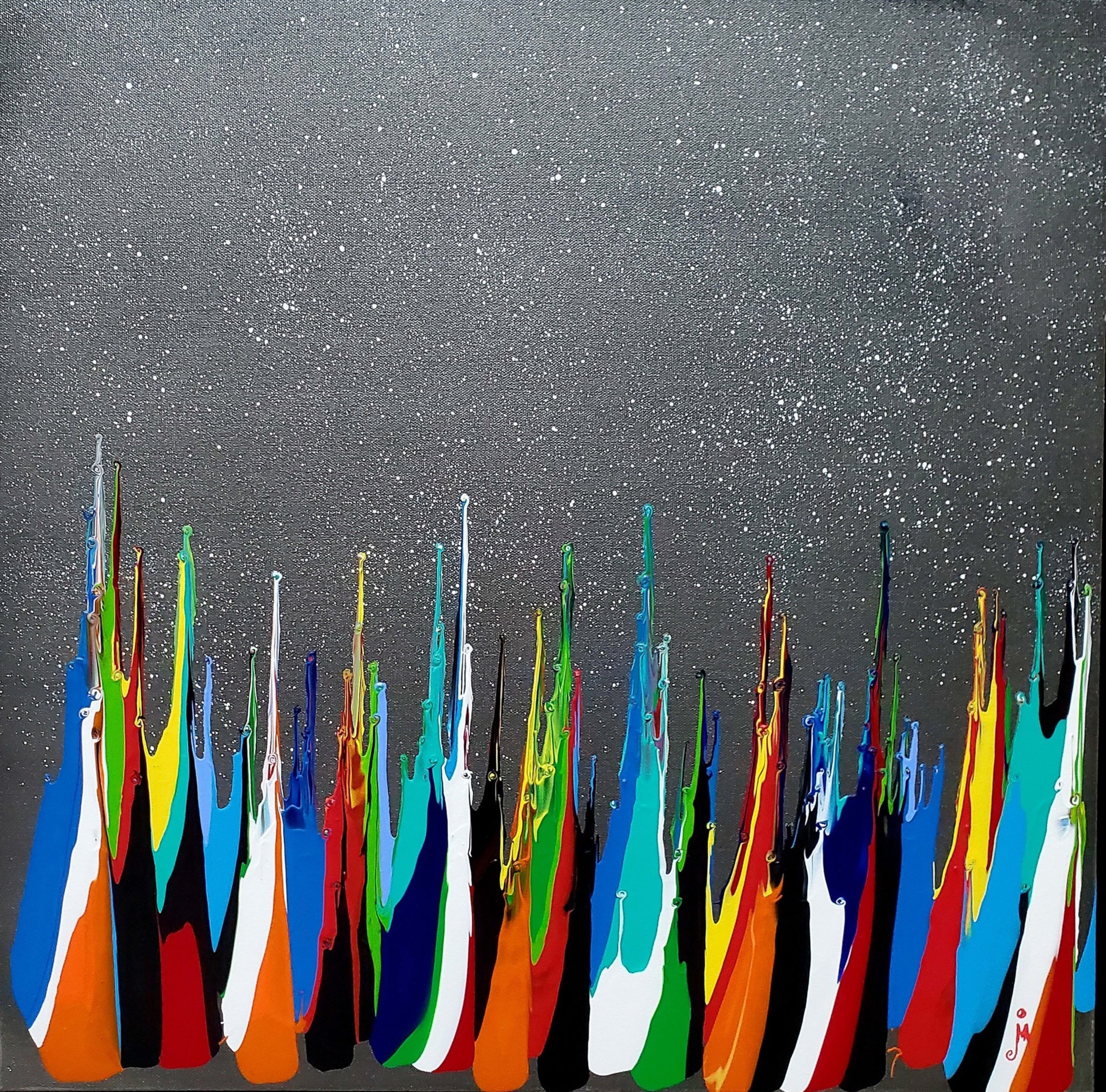These sculptures, often grouped together, appear to be in motion—traveling, waiting, and existing in a state of transition. Their faceless forms allow viewers to see themselves, their ancestors, or those around them within the work. They are not tied to any one culture, nationality, or race. Instead, they stand as universal symbols of humanity, representing the strength and resilience of those who cross borders—whether physical, emotional, or spiritual.
A Reflection of Human Experience
Inspired by Molina’s own journey from El Salvador to the United States, the collection is deeply personal yet universally relatable. At the age of 16, Molina crossed through the desert, facing uncertainty and hardship. His experiences shape the essence of Children of the World, bringing to life the struggles and hopes of those who travel great distances—whether by necessity or by choice.
Constructed primarily from concrete and steel, the sculptures have an almost ghostly presence, their pale surfaces reflecting light in a way that makes them appear ethereal and weightless. Their stark whiteness is intentional—meant to symbolize invisibility, a reminder of the countless individuals who labor in foreign lands, often unseen and unheard.
Symbolism and Interpretation
Each figure in Children of the World has a slightly different posture and stance, some appearing to lean on others, some standing alone, and others looking skyward. This variation represents the many stages of migration and adaptation—fear, hope, solitude, and community.
Molina has deliberately chosen to remove defining facial features, allowing the sculptures to transcend individual identity and become reflections of all people. Their elongated forms stretch toward the sky, as if reaching for something greater—aspiration, faith, or the simple act of survival.
Public Installations and Impact
The collection has been exhibited in museums, gardens, and public spaces across the United States, Mexico, and El Salvador. The placement of these sculptures is carefully considered, often in natural landscapes or urban spaces, where they interact with light, shadow, and the environment. Whether standing along the shore of Lake Ilopango in El Salvador or arranged in the courtyards of art museums, they invite contemplation and conversation.
Viewers often describe a profound emotional response upon encountering Children of the World. Some see figures lost in time, others recognize them as pilgrims, refugees, ancestors, or children of the future. Their meaning evolves based on the viewer’s perspective, making the work a deeply personal yet collective experience.
A Call for Reflection
At its core, Children of the World is not just an artistic statement but a call for empathy, understanding, and connection. It challenges us to acknowledge those who journey among us, to see them not as strangers, but as fellow travelers in the shared human experience.
By blending abstract minimalism with profound storytelling, Molina has created a series that continues to resonate globally, reminding us that despite our differences, we are all part of the same world.

















